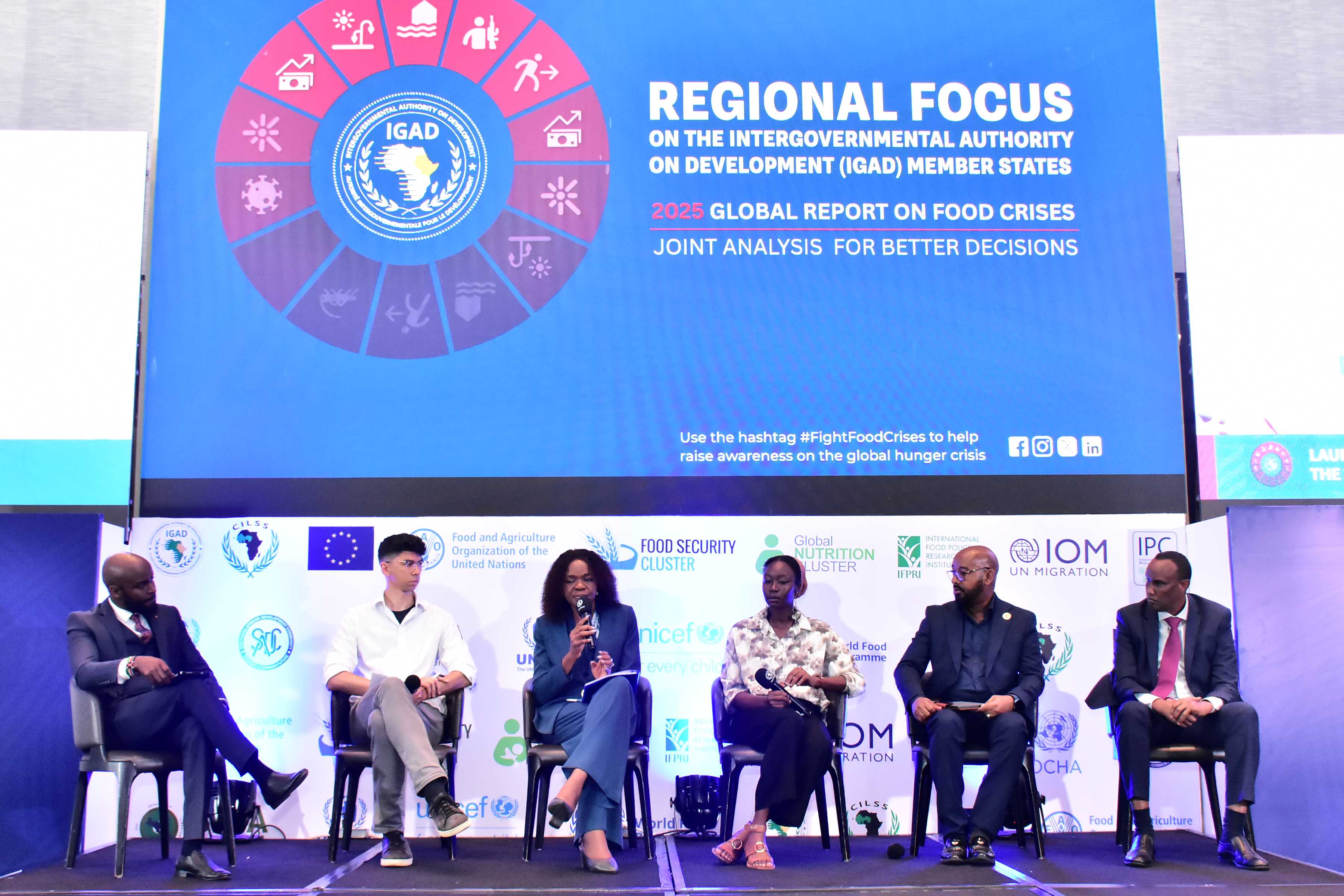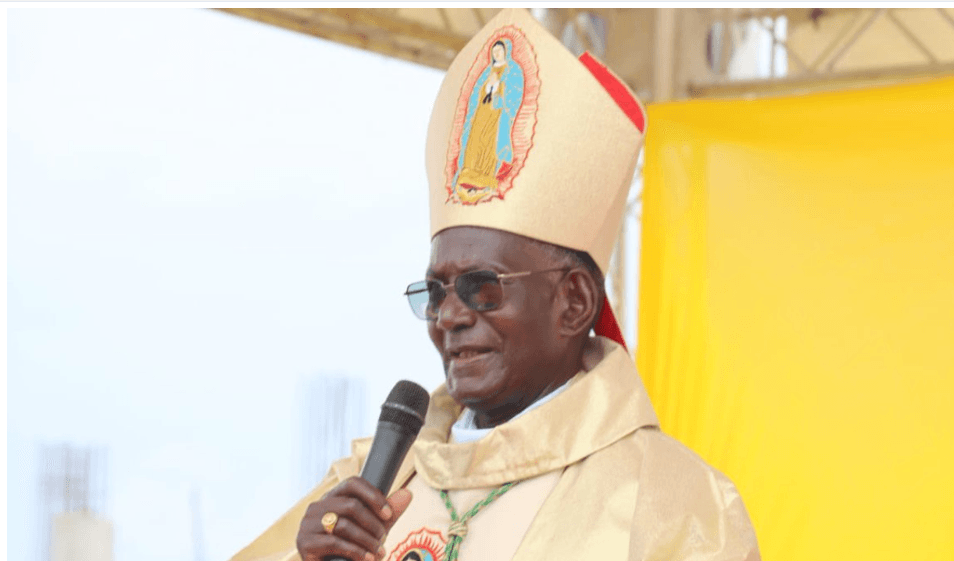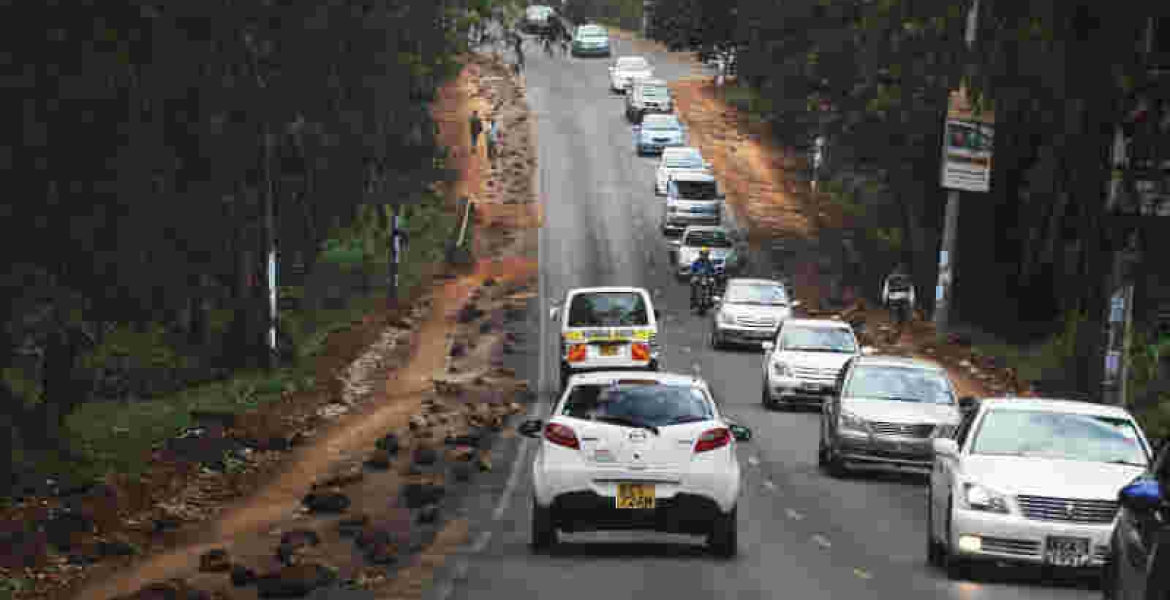
 Panel discussion moderated by media personality Mark Masai to discuss the Igad Regional Focus of the 2025 Global Report on Food Crises, September 16, 2025. /IGAD
Panel discussion moderated by media personality Mark Masai to discuss the Igad Regional Focus of the 2025 Global Report on Food Crises, September 16, 2025. /IGAD
Kenya is among six Igad countries facing one of the worst food crises in recent years, with 42 million people projected to experience high levels of acute food insecurity in 2025.
According to the Igad Regional Focus of the 2025 Global Report on Food Crises released Tuesday in Nairobi, the crisis is most severe in Sudan and South Sudan but extends across Djibouti, Kenya, Somalia, and Uganda.
The report shows a sharp escalation of hunger in the region.
Data collected since 2016 shows that the number of people facing crisis levels of food insecurity or worse has tripled in Kenya, Somalia, South Sudan, Sudan and Uganda.
The figure rose from 13.9 million in 2016, when the first Global Report on Food Crises was published, to 41.7 million in 2025.
Sudan now accounts for the largest highly food-insecure population, with 24.6 million people struggling to survive amid conflict and economic collapse.
Several parts of the country are already in famine or at risk of famine.
In South Sudan, nearly six in ten people—57 per cent—are in IPC Phase 3 (crisis) or above, the highest share in the region, with two counties also facing the risk of Famine.
Igad warns that the outlook could deteriorate further as climate extremes persist.
Its Climate Prediction and Applications Centre (ICPAC) forecasts drier-than-usual conditions in southern Ethiopia, eastern Kenya, and much of Somalia.
Some of these areas have already endured below-average rainy seasons, with drought persisting in central and northern Somalia.
Another failed season could intensify hunger and malnutrition across the region.
The human toll is especially stark among children.
Across seven member states, 11.4 million children under five are acutely malnourished, and 3.1 million of them urgently require lifesaving treatment for severe acute malnutrition.
Yet due to funding cuts, up to 1 million children could miss out on this critical support.
Forced displacement is adding another layer of vulnerability.
As of June, 23.2 million people in the Igad region had been uprooted from their homes, including 17.8 million internally displaced persons and 5.4 million refugees and asylum seekers.
Sudan alone has 10 million IDPs, the world’s largest displacement crisis.
Uganda continues to host the continent’s biggest refugee population at 1.9 million.
For many of the displaced, livelihoods have been shattered, social support networks lost, and reliance on dwindling humanitarian assistance has deepened.
Igad’s executive secretary, Dr Workneh Gebeyehu, said the report highlights the interconnected nature of the crisis.
“The food crisis in our region is more than just hunger; it’s a stark reminder of the challenges we face—conflict, the severe effects of climate change, economic shocks, and displacement," he said.
"No single institution can tackle these crises on its own. Through collective action, working across governments, regional institutions, and partners, we can address the root causes of vulnerability and create lasting solutions for our people.”
Fao Subregional Coordinator for Eastern Africa ad-interim, Farayi Zimudzi, emphasised the urgent need to protect farmers and pastoralists.
“Rural agricultural communities are among the worst affected. With another poor rainy season expected, we must act now with anticipatory actions. However, anticipatory action alone won’t break the cycle. They must be paired with long-term resilience building and investment in sustainable agriculture to ensure no one is left behind.”
WFP’s Regional Director for Eastern and Southern Africa, Eric Perdison, described the scale of the crisis as “deeply alarming.”
He warned, “In Sudan, famine is already unfolding, and the situation could worsen. While saving lives is an immediate priority, we must also build resilience and support communities so they are not forced to depend on humanitarian assistance for survival.”
The seventh edition of the Igad Regional Focus underscores the need for collective, evidence-based action to confront food insecurity.
As part of the Global Report on Food Crises 2025, it provides analysis to help governments, regional institutions and humanitarian partners tackle both the drivers and consequences of hunger in eastern Africa.















![[PHOTOS] Gor fans march to Bondo to honour Raila](/_next/image?url=https%3A%2F%2Fcdn.radioafrica.digital%2Fimage%2F2025%2F11%2F753aaa26-999c-40fe-bf2e-409fc6282745.jpeg&w=3840&q=100)

